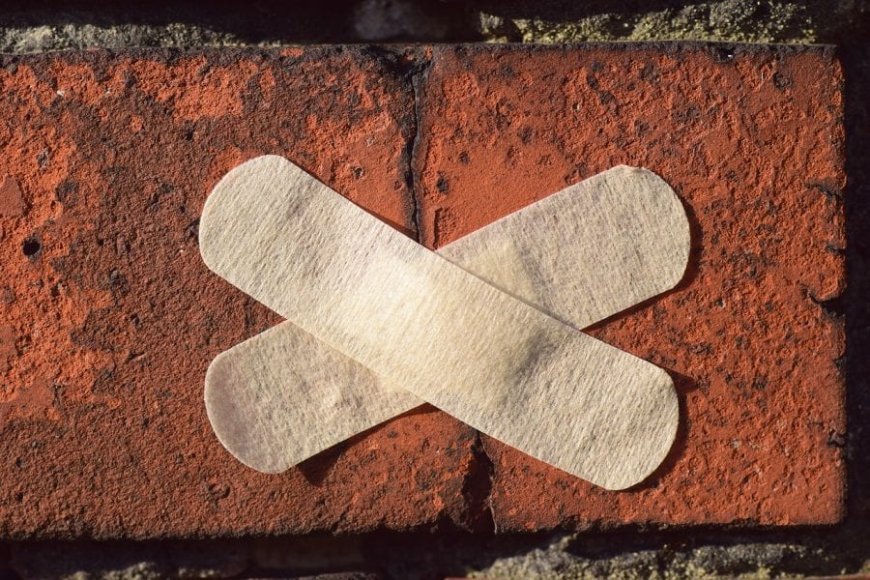The Rise of Self-Healing Materials in Medicine: Can Your Body Repair Itself Like Wolverine?
Explore how self-healing materials are revolutionizing medicine. From smart implants to regenerative tissue, discover the future of medical innovation.

Introduction: Science Fiction or Medical Reality?
Imagine a future where broken bones heal faster, damaged organs regenerate, and even medical implants repair themselves without needing replacement. It sounds like something out of a superhero movie—specifically, Wolverine from X-Men, who possesses extraordinary self-healing abilities.
But thanks to groundbreaking research in biomedical engineering and regenerative medicine, self-healing materials are no longer just science fiction. Scientists are developing smart biomaterials that mimic the body's natural healing processes, paving the way for faster recovery times, longer-lasting medical devices, and even artificial organs that can repair themselves.
Is the era of self-repairing medicine upon us? Let's explore the latest innovations, their real-world applications, and what this means for the future of healthcare.
What Are Self-Healing Materials?
Self-healing materials are engineered substances capable of repairing damage automatically, without external intervention. These materials draw inspiration from biological healing mechanisms, such as clotting in human blood or skin regeneration after a cut.
In medicine, researchers are developing biocompatible self-healing materials that can integrate with human tissue, repair damage in real-time, and even trigger the body's natural regenerative processes.
Types of Self-Healing Materials in Medicine
- Hydrogels – Used for wound healing and tissue engineering.
- Biodegradable Polymers – Found in drug delivery systems and sutures.
- Shape-Memory Alloys – Used in bone implants and cardiovascular stents.
- Self-Healing Ceramics – A potential game-changer for dental and orthopedic applications.
- Bioengineered Tissues – Artificial skin, blood vessels, and even cartilage that repairs itself.
These materials not only extend the lifespan of medical devices but also significantly reduce recovery times and improve patient outcomes.
The Science Behind Self-Healing in Medicine
1. Bioengineered Hydrogels for Wound Healing
Hydrogels are water-based, gel-like materials that mimic human tissue and are widely used in wound healing. Scientists have now enhanced hydrogels with self-healing properties, allowing them to reform and seal wounds without stitches.
A study from Harvard University developed a hydrogel infused with protein-based crosslinking molecules, enabling it to bond with human skin and accelerate healing (Harvard Wyss Institute).
? Potential Use Cases:
- Treating chronic wounds in diabetic patients.
- Creating injectable biomaterials for organ regeneration.
- Enhancing tissue scaffolding for regenerative medicine.
2. Self-Healing Bone Implants: The Future of Orthopedics
Traditional bone implants, such as metal plates and screws, degrade over time, requiring additional surgeries. However, scientists have developed self-healing ceramic materials that stimulate bone regeneration.
A recent breakthrough from MIT introduced a calcium phosphate-based ceramic that mimics natural bone mineralization, enabling implants to heal small cracks and promote bone regrowth (MIT News).
? Potential Use Cases:
- Spinal implants for back injuries.
- Cranial bone grafts for reconstructive surgery.
- Dental implants that repair themselves over time.
3. Smart Sutures That Heal and Detect Infection
Self-healing polymers are now being used in surgical sutures that not only close wounds but also release antibiotics to prevent infections. Researchers at Johns Hopkins University developed a biodegradable suture material that dissolves as the wound heals, eliminating the need for removal (Johns Hopkins Medicine).
? Potential Use Cases:
- Internal surgeries where traditional sutures are hard to remove.
- Combat medicine for rapid wound closure.
- Smart stitches that change color when an infection is detected.
4. Cardiovascular Breakthrough: Self-Healing Heart Patches
Heart disease remains the leading cause of death worldwide, with many patients requiring heart transplants or implants. But what if the heart could heal itself?
Scientists at Stanford University have developed a self-healing heart patch made of biocompatible proteins and nanomaterials that can repair minor cardiac tissue damage caused by heart attacks (Stanford Medicine).
? Potential Use Cases:
- Regenerating heart muscle after a heart attack.
- Preventing scar tissue formation in cardiac patients.
- Improving long-term performance of pacemakers and heart valves.
How Close Are We to Wolverine-Like Regeneration?
While we’re far from full-body regeneration like Wolverine, self-healing materials are making huge strides in regenerative medicine. Some researchers believe that within the next 10–20 years, medical treatments will:
✅ Eliminate the need for traditional stitches with regenerative hydrogels.
✅ Reduce dependency on organ transplants by regrowing damaged tissues.
✅ Increase implant longevity with self-repairing bone grafts and heart valves.
✅ Enhance drug delivery through smart materials that release medicine on demand.
According to a report by Grand View Research, the global self-healing biomaterials market is expected to grow to $3.6 billion by 2030, driven by medical advancements and aging populations (Grand View Research).
Challenges & Ethical Considerations
Despite the promise of self-healing medicine, several challenges remain:
- Cost & Accessibility: Many of these materials are still expensive and require mass production.
- Regulatory Approval: The FDA and other health agencies must ensure safety and effectiveness before widespread use.
- Ethical Concerns: How much should we modify the human body? Could this lead to controversial bioenhancements?
Nevertheless, the potential benefits far outweigh the risks, and ongoing research is bringing self-healing medicine closer to reality every day.
Final Thoughts: Is Self-Healing the Future of Medicine?
From self-repairing bones to wound-sealing hydrogels, self-healing materials are set to revolutionize healthcare. While we may not have Wolverine’s instant regeneration just yet, these innovations are pushing the boundaries of modern medicine, reducing surgery risks, and improving recovery times.
With the rapid pace of biomedical advancements, the question isn’t if self-healing materials will become mainstream—it’s when.
Would you trust a self-healing implant in your body? The future of medicine might just depend on it.
What's Your Reaction?
 Like
0
Like
0
 Dislike
0
Dislike
0
 Love
0
Love
0
 Funny
0
Funny
0
 Angry
0
Angry
0
 Sad
0
Sad
0
 Wow
0
Wow
0



















































